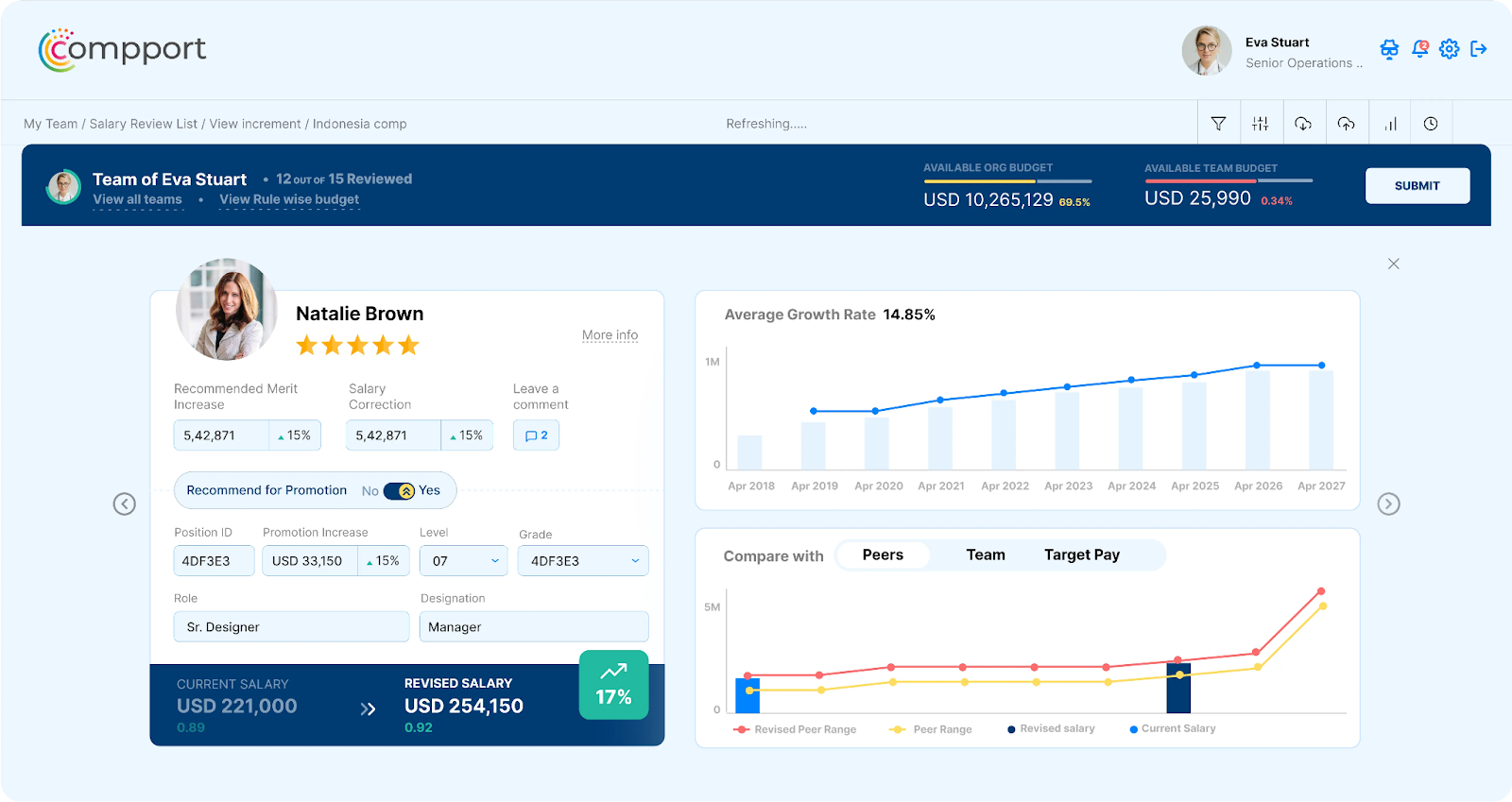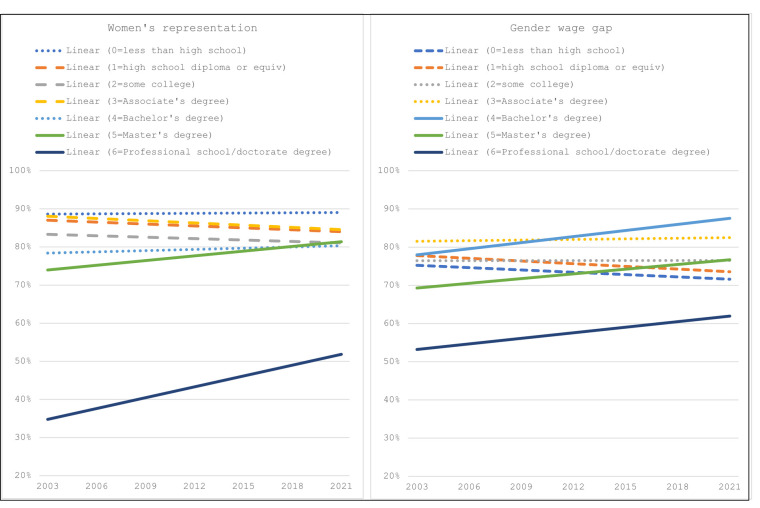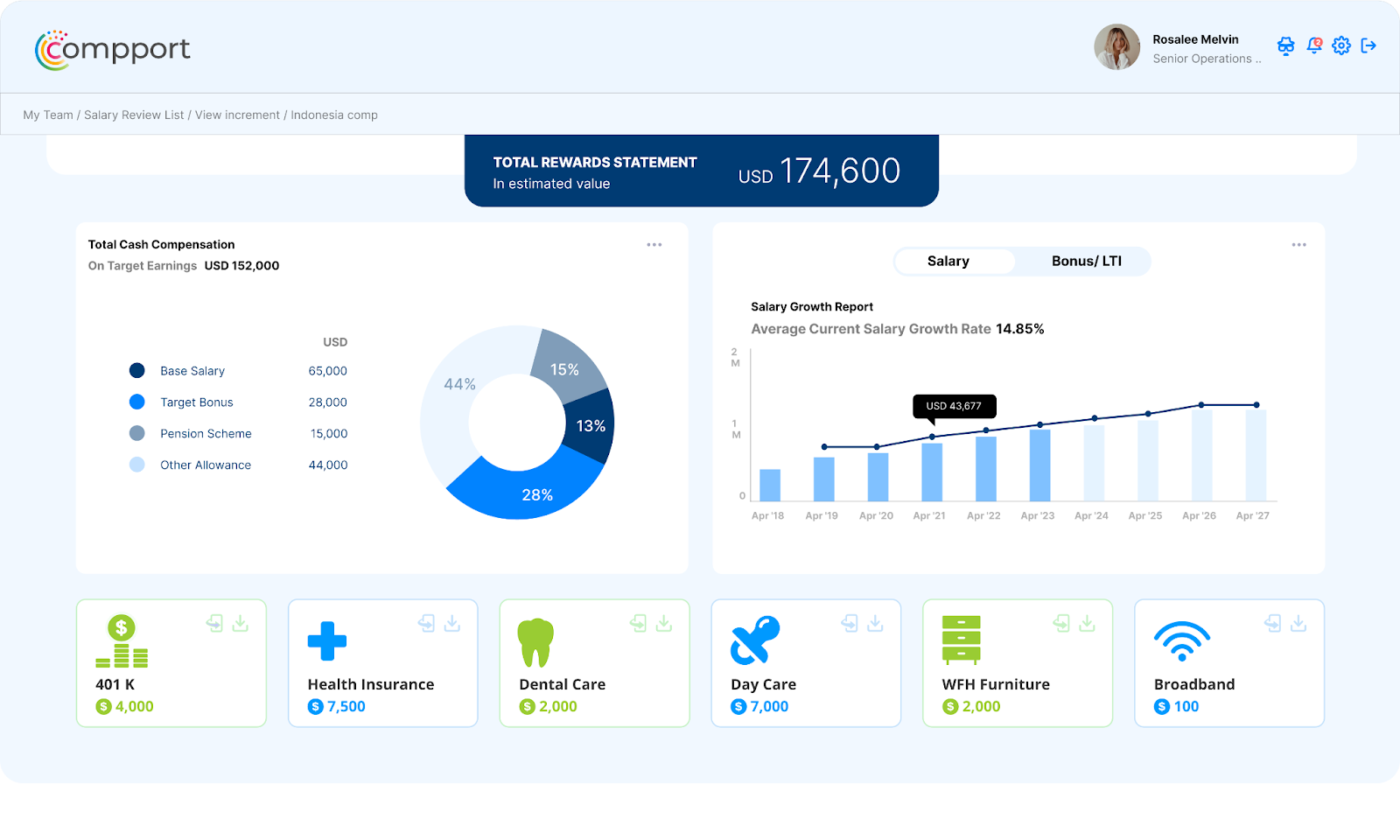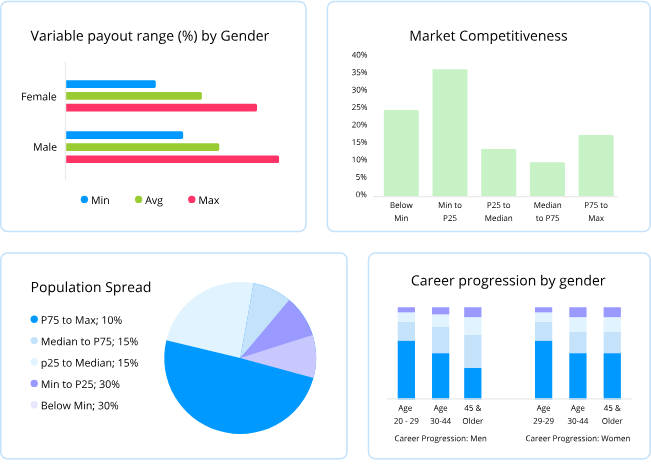10 Top Challenges in Global Compensation Management in 2025 (+Fixes)
%20(26).png)
Compensation is supposed to be a strategic asset, but managing it has become a bit of a nightmare. If you're in comp, you know the drill: October rolls around and suddenly your next six months are spoken for.
What used to be a straightforward merit cycle has evolved into a juggling act of pay equity reviews, new transparency laws, and managers who struggle to understand why their star employee can't receive a 30% bump.
According to a Gallup survey, 31% of employees are already dissatisfied with their pay. When you mess up compensation, you're not just dealing with spreadsheet errors; you're looking at people walking out the door.
This blog breaks down the 10 biggest compensation mistakes you're likely to deal with in 2025 and gives you straightforward fixes that actually work in the real world.
10 Challenges in International Compensation Management
Here are the ten compensation challenges that keep international HR teams up at night—and the practical solutions that can help you sleep better.
Compensation challenge #1: When spreadsheets become your worst enemy
Managing compensation across multiple countries often means juggling dozens of Excel files, each with its version of "the truth." You've got compensation data scattered across different workbooks, managers working from outdated versions, and that sinking feeling when you realize someone's been using last year's salary bands for new hires.
The University of Hawaii found that nearly 90% of spreadsheets contain errors, and when those errors involve someone's paycheck, the consequences go beyond embarrassment. Even a minor error in bonus calculations can create issues that might take months to resolve. As your organization grows, these manual processes become dangerous.
The real impact: Data integrity suffers, compliance becomes nearly impossible to track, and your team spends more time firefighting spreadsheet disasters than developing an actual compensation strategy.
The fix:
- Move to a centralized compensation management platform with built-in validation rules and approval workflows.
- Tools like Compport eliminate version control nightmares and provide audit trails that spreadsheets simply can't match.
- Start by identifying your most error-prone processes and migrate those first—you don't have to overhaul everything at once.

Compensation challenge #2: Gap in pay equity visibility
You think your organization is pretty fair when it comes to compensation—until you dig into the data and discover that your female engineers are earning 15% less than their male counterparts, or that certain ethnic groups are consistently clustered in the lower pay bands. These disparities often go undetected for years, building up like a compensation time bomb.
"You can't fix what you can't see.” - Krish Shankar, Ex-CHRO, Infosys
One in three employers lacks any pay equity strategy at all. Even in female-dominated fields like nursing, women still earn $250 less weekly than men in identical roles.
What's particularly frustrating is that research spanning nearly two decades (shown below) shows that higher education doesn't solve the problem—the gender wage gap persists across all educational levels, suggesting these disparities run deeper than qualifications alone.

The real impact: Legal exposure skyrockets, employee trust erodes when inequities surface, and fixing historical gaps can cost millions in back pay and adjustments. Plus, in today's transparency-focused world, pay equity issues can become PR disasters.
The fix:
- Set up real-time pay equity dashboards that automatically flag disparities by gender, ethnicity, role, and geography.
Here’s what Compport’s pay equity dashboard looks like:

- Run quarterly mini-audits instead of waiting for annual reviews.
- Use tools that can slice your data multiple ways—sometimes the story isn't in the overall numbers but in specific departments or job levels.
- Most importantly, don't just identify gaps; create action plans with timelines and accountability.
🔖Download our Pay Equity Audit Guide
Compensation challenge #3: When employees don't see the full picture
Your software engineer thinks they're underpaid at $120k, completely forgetting about their $15k annual bonus, $8k 401k match, premium health insurance, and those stock options that could be worth serious money down the line.
Sound familiar? Most employees focus solely on base salary and miss the total value of their compensation package.
This disconnect is expensive. Companies spend thousands on benefits and perks that employees often barely acknowledge, either during salary negotiations or exit interviews. One HR team shared how they used to hold manual town halls, trying to explain equity compensation, watching eyes glaze over as they explained vesting schedules and strike prices. Everything changed when they moved to personalized digital statements that broke down the real dollar value of each component.
The real impact: Employees feel undervalued despite competitive packages, retention suffers because people don't realize what they'd lose by leaving, and recruiting becomes harder when candidates can't see your total value proposition.
The fix:
- Create personalized total rewards statements that show employees exactly what their full package is worth in real dollars.

- Include everything—base pay, bonuses, benefits, retirement contributions, even that free gym membership.
- Update these quarterly and make them accessible through your HRIS. When someone asks for a raise, hand them their statement first. Sometimes, seeing the numbers changes the entire conversation.
Here’sa sneak peek into Compport’s total rewards statement 👇. Note how it simplifies communication for both managers and employees:
Compensation challenge #4: When managers make compensation decisions in the dark
Picture this: your best manager comes to you asking for a 25% raise for their star performer, completely unaware that this person is already at the 90th percentile for their role. Meanwhile, another manager is trying to lowball a new hire because they have no clue what the market rate actually looks like.
When managers lack access to performance data, budget constraints, or market benchmarks, their compensation decisions become costly and unreliable.
This happens more often than you'd think. Managers want to reward good work and retain talent, but without proper context, they either ask for the impossible or undervalue their people.
The real impact: Budget planning becomes impossible when managers submit unrealistic requests, pay equity suffers when similar employees get vastly different treatment, and your credibility takes a hit when you're constantly saying "no" without being able to explain why.
The fix:
- Provide managers with self-service dashboards that display their team members' salary band placement, their market rate comparison, and the budget allocation available to them.
Here are all the insights you can access with a pay equity software like Compport 👇

- Include performance ratings and suggested pay ranges based on actual data.
- Set up guardrails that prevent requests outside reasonable parameters, but make sure managers understand the "why" behind the limits.
Compensation challenge #5: When your HRIS becomes a compensation roadblock
Your Workday system is fantastic for storing employee data and running payroll, but ask it to handle complex bonus calculations or equity modeling, and suddenly you're back to building workarounds in Excel.
Many organizations stick with their existing systems, thinking that integration will be seamless, but find themselves constrained by rigid workflows that cannot adapt to their actual compensation needs.
The "free" solution that came with your SAP investment often ends up costing more in productivity and workarounds than a purpose-built tool would.
The real impact: Your team gets stuck managing compensation through systems designed for basic HR functions, not strategic planning. Complex bonus structures become impossible to automate, equity planning happens in spreadsheets, and you're constantly dependent on IT for simple changes.
The fix: Look for specialized compensation platforms that integrate seamlessly with your existing HRIS while adding the sophisticated planning capabilities you actually need.
Solutions like Compport can integrate directly with Workday, Oracle, or SAP, allowing you to keep your data where it resides while adding the compensation-specific functionality that legacy systems cannot provide.
Compensation challenge #6: When everyone's salary is a random number
Imagine trying to explain to your CFO why one software engineer earns $ 90,000 while another with similar experience earns $ 130,000, and your only answer is "that's what we negotiated." Without proper salary bands or benchmarking data, every compensation decision becomes a guessing game that often results in either overpaying for talent or losing good people to better offers.
This happens more often than you might expect, especially in fast-growing companies where hiring speed usually takes precedence over compensation strategy.
The real impact: Internal equity goes out the window when similar roles have wildly different pay ranges, your recruiting budget becomes unpredictable, and good employees start questioning their worth when they discover pay inconsistencies.
Additionally, without benchmarking data, you're either hemorrhaging money on inflated salaries or losing talent to competitors who are aware of market rates.
The fix:
- Start with a comprehensive salary structure project that includes both internal job leveling and external market benchmarking.
- Create grade-based salary ranges that accurately reflect the actual job complexity and market realities.
- Use reliable salary survey data from sources such as Radford, Mercer, or industry-specific surveys to anchor your bands in real market conditions.
- Once you have the structure, audit your current employees against it and create a plan to address any major outliers over time.
Here’s how to create a salary range with Compport:
Compensation challenge #7: When changing pay transparency laws catch you off guard
Posting salary ranges is no longer an option. States like New York, Colorado, and New Jersey now require you to include salary ranges in job postings, and more are jumping on the bandwagon every year. What started as a "nice to have" for employer branding has become a legal requirement that can cost you serious money if you get it wrong.
The tricky part is having the necessary infrastructure to support it. Employees can now request to view the salary range for their role, and you need to provide a documented rationale for pay decisions that can withstand scrutiny. If someone in California asks why their colleague in the same role makes more, you'd better have a good answer that goes beyond "we hired them in a different year."
The real impact: Non-compliance can lead to hefty fines and lawsuits, posting inaccurate ranges damages your credibility with candidates, and internal transparency requests can expose pay equity issues you didn't know existed. Plus, your recruiting team is stuck in figuring out what ranges to post for every single job.
“Transparency doesn’t mean telling everyone everything. It means giving people enough context to trust the system.” - John Radford, Founder, Radford Surveys
The fix:
- Build a salary range library that ties directly to your job architecture, so every role has a documented, defensible range.
- Set up automated compensation statements that employees can access anytime, showing not just their salary but how it fits within the range for their role.
- Create audit logs that track every compensation decision with a clear rationale.
- Most importantly, train your managers on how to have transparent conversations about pay, because once the ranges are visible, people are going to ask questions.
Compensation challenge #8: When your equity program is invisible to employees
Your organization has been generous with equity grants, but half of your employees are unaware of what they own or when it vests. Meanwhile, you're tracking everything in spreadsheets that take hours to update, and when someone asks, "What's my equity worth if we hit our Series B targets?" it takes you days or even weeks to pull up the actual data.
Long-term incentives are intended to be a retention goldmine, but without proper tracking and visibility, they become invisible compensation that employees often overlook. You're leaving money on the table by quitting right before vesting cliffs, and others have no idea their equity could be worth six figures if the company meets its goals.
The real impact: Employees undervalue their total compensation package because they can't see the equity upside, retention suffers when people don't understand vesting schedules, and your team spends way too much time answering basic "when do my options vest?" questions instead of doing strategic work.
The fix:
- Implement equity management tools that automatically track vesting schedules and grant values in real-time.
- Create employee-facing dashboards that show exactly what they own, when it vests, and what it could be worth under different company valuation scenarios.
- Use simulation tools to model various growth trajectories, allowing employees to visualize the potential upside.
- Most importantly, make this information easily accessible—if people have to email HR to find out their equity status, you're doing it wrong.
Here’s how you can create and communicate a long-term incentive plan using Compport:
Compensation challenge #9: When your sales team doesn’t trust your sales commission calculations
Your sales reps spend more time arguing about sales incentive calculations than actually selling, and your finance team dreads every quarter-end because someone's payout is always wrong. Meanwhile, half your sales force thinks the comp plan is rigged against them, and the other half has figured out how to game the system in ways you never intended.
When your top performer can't figure out why their commission was $3k short last quarter, or when territory changes create payout disputes that drag on for months, you're not just losing money on incorrect calculations. You're losing trust, which is way harder to fix than spreadsheet errors.
The real impact: Sales productivity drops when reps spend time disputing payouts instead of closing deals, your best talent leaves for competitors with transparent commission structures, and your finance team burns hours every month reconciling payments and fielding complaints. Budget planning becomes impossible when you can't predict actual commission costs.
The fix:
- Implement automated territory-based rules that handle account reassignments and deal splits without manual intervention.
- Set up real-time clawback processes for returns or cancellations to ensure adjustments occur immediately, rather than at quarter-end.
- Build payout accuracy checks that flag unusual commission amounts before they're processed.
- Provide reps with self-service dashboards that show their pipeline value, projected payouts, and the exact impact each deal has on their commission.
Compport’s sales incentive software presents a clean dashboard to track sales performance:

Compensation challenge #10: Nobody wants to be the first to talk about money
Your managers avoid pay conversations, and your executives think transparency equals chaos. So instead of being proactive, everyone keeps quiet and hopes the topic never comes up—until it inevitably does, usually at the worst possible moment.
When people see pay data for the first time, questions follow. But those questions exist whether you're transparent or not. The difference is whether you control the narrative or let rumors and Glassdoor speculation fill the void.
One compensation manager shared how their "secret" salary bands had become common knowledge anyway, even when someone left their laptop open during a meeting—except now the data was out there without any context.
The real impact: A lack of pay transparency results in distrust and turnover, as employees make career decisions based on incomplete information. When pay equity issues eventually surface, you have zero credibility to address them. Your managers end up unprepared for compensation conversations that happen whether you plan for them or not.
“Transparency is not about publishing everyone’s pay—it’s about being able to explain it.” — Poonam Khatwani, APAC C&B Director, Hitachi Rail
The fix:
- Start with a phased approach—share salary ranges first, then expand to showing where individuals sit within those ranges.
- Create role-based visibility so managers see department-level data while individual contributors see their own ranges.
- Train your managers on compensation conversations before you open the floodgates. Give them scripts for common scenarios and clear escalation paths.
What’s Next?
Compensation management isn't getting any simpler—if anything, 2025 will bring new regulations, evolving employee expectations, and more complex global workforce challenges. But here's the thing: you don't have to tackle all ten challenges at once.
Start with your biggest pain point. Maybe it's those spreadsheet disasters eating up your time, or pay equity gaps that keep you up at night.
Pick one challenge, implement the fix, and build momentum from there. The organizations that address these issues now will have a significant advantage over those still fighting fires with outdated tools and manual processes. Your future self will thank you.
Want to see how Compport can address these challenges in a single, integrated platform?

FAQs
What are the challenges of compensation management?
The biggest challenges include managing pay equity across diverse groups, addressing manual spreadsheet processes prone to errors, ensuring compliance with evolving transparency laws, and keeping managers informed about budget constraints and market rates while maintaining fair and competitive compensation structures.
What are the challenges and issues in financial compensation?
The key issues and challenges include inconsistent salary structures leading to pay disparities, difficulty in tracking complex bonus calculations and equity programs, a lack of real-time visibility into total rewards packages, and an inability to benchmark against market rates, resulting in either overpaying or losing talent to competitors.
What is the main challenge associated with global compensation management?
The primary challenge associated with global compensation is maintaining pay equity and consistency across different countries while navigating varying local regulations, currency fluctuations, cost-of-living differences, and cultural expectations, all while using fragmented systems that make global oversight and standardization nearly impossible to achieve effectively.


%20(25).png)

%20(24).png)
